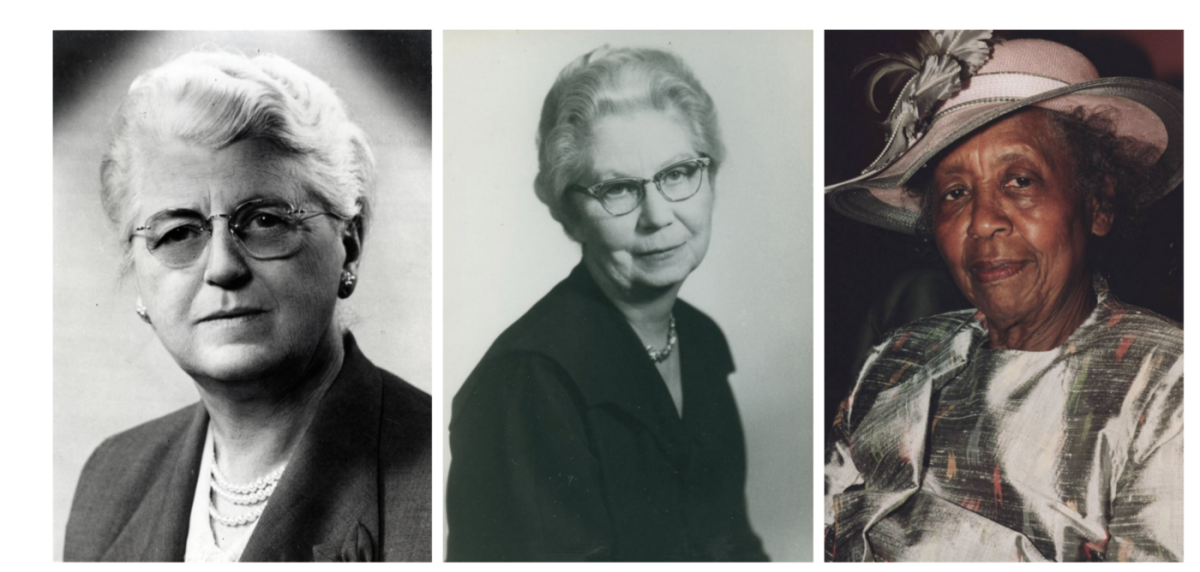Loney Clinton Gordon, Grace Eldering and Pearl Louella Kendrick together researched, created and developed the first vaccines for whooping cough. Throughout their careers-long collaboration, they went on to contribute to the promotion of vaccine standards worldwide.
A WHOLE COMMUNITY TO WORK TOGETHER
Pearl Louella Kendrick was born on 24 August 1890 in Illinois. Pearl was described by her teachers as “a first class student, thorough, accurate and rapid.” In 1914, Pearl graduated from Syracuse University to become a school teacher.
While teaching, she continued to study bacteriology at Columbia University, and, in the early 1920s, she was recruited by the Michigan Department of Health. At that time, it was common to recruit women scientists for their comparatively cheap labour. The director of the Bureau of Laboratories provided his employees funding and time to pursue their education and, in 1932, Pearl earned her PhD from Johns Hopkins University.
In 1926, Pearl was recruited to direct the Department of Health’s newly opened Grand Rapids branch. By the late 1920s, the branch had established a national reputation for its bacteriologic research.
Grace Eldering was born on 5 September 1900 in Montana. After graduating from high school, Grace attended the University of Montana for four semesters before money troubles caused her to drop out. She taught for four years, saving up enough money to return to the university and obtain a BSc, after which she returned to teaching. In 1928, Grace moved to Michigan to volunteer at the Department of Health, where she was promptly hired. She moved to join Pearl’s work in Grand Rapids in 1932. Grace earned her PhD from Johns Hopkins University in 1942.
Despite French researchers identifying the bacteria that caused whooping cough in 1906, and a number of vaccines having been developed to combat the disease, by 1931 the American Medical Association’s Council on Pharmacy and Chemistry had found “no evidence” of their value or efficacy. At that time whooping cough was killing an estimated 6,000 children each year in the US, with countless more deaths worldwide.
In 1932, a cluster of whooping cough cases broke out in Grand Rapids. Thus, Pearl and Grace began the whooping cough research project. They set to work improving the methods for growing the disease’s bacteria, inactivating it, and creating a safe vaccine.
Pearl and Grace performed carefully controlled animal studies of different vaccines, and conducted numerous sterility and safety tests, even self-injecting the vaccines to test their safety. The safe vaccines were then distributed to local doctors.
In designing and directing the first large-scale controlled clinical trial for the vaccine, Pearl and Grace sought community buy-in from a diverse coalition of local and state public health departments, citizens’ groups, women’s groups, parent–teacher associations, and a network of local nurses and doctors. When doctors told them about infections in the community, Pearl and Grace would go to visit the affected families. In a 1958 retrospective, Grace noted that “among the many who contributed to the success of the program were the parents and their children who accepted the requirements for test and control groups in the field trials… and laid a foundation in the community upon which other studies could be built.”
Through their research, Pearl and Grace were able to determine the correct period of self-isolation for whooping cough, to reduce infection within communities. Before these studies, mandated whooping cough quarantines varied from two to four weeks, but Grand Rapids adopted Pearl and Grace’s quarantine recommendations. Their recommendations required doctors to report the disease, the health department to place warning placards on affected homes, and the enforcement of a 35 day isolation period or, with 2 consecutive negative cough plates, release on day 28 after the onset of symptoms.
Pearl and Grace’s vaccine was being produced by the Michigan Department of Health by 1938, and distributed nationally by 1940. The American Academy of Paediatrics approved the vaccine for routine use in 1943. Prolonged and widespread vaccination saw a plummeting in the number and severity of cases and, by 1960, the number of whooping cough cases had dropped to 5% of those occurring in 1934.
WHAT CAN BE ACHIEVED
Loney Clinton was born in Arkansas in 1915, and earned her Bachelor’s degree in home economics and chemistry in 1939. Following college, she found a job working as a dietitian in an institution in Virginia, but was treated poorly. She later came to Grand Rapids to seek work, but was informed that “white male chefs would not want to take orders from a black female dietitian.”
Pearl and Grace’s research continued, and in 1944 they hired Loney as a chemist. Loney tested thousands of culture plates, leading to her finding the strain to make a better, more effective vaccine, and better ways of incubating the virus in the laboratory.
Despite their groundbreaking achievements, the women involved in the development of the whooping cough vaccine did not seek fame, which Grace described as “embarrassing.” When asked to write an encyclopaedia entry on whooping cough, Pearl elected not to include the names of its vaccine’s creators.
Over the course of their careers, Pearl and Grace published more than 60 articles in a wide variety of journals, including the American Journal of Public Health and the Journal of Infectious Diseases. The research group shared their vaccines, plates, cultures and research with scientists around the world, hosting international teams of scientists in their laboratory. Pearl travelled the world, often as a consultant for the World Health Organisation, helping to establish vaccine programs in eastern Europe and Central and South America.
